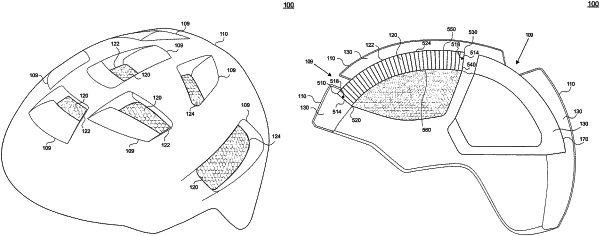| CPC A42B 3/28 (2013.01) [A42B 3/124 (2013.01); A42B 3/127 (2013.01); A42B 3/281 (2013.01); Y10T 29/53996 (2015.01)] | 25 Claims |

|
1. A helmet, comprising:
a shell comprising a first vent defining a first opening and a second vent defining a second opening;
a shock absorbing liner adjacent to and attached to the shell and comprising a cavity at least partially aligned with the first and the second vents; and
a shock absorbing insert comprising an array of energy absorbing cells positioned in and substantially filling the cavity such that the array of energy absorbing cells is visible through, and spans across at least a portion of, each of the first and second vents, wherein at least a portion of the shock absorbing liner is positioned between the shell and the array of energy absorbing cells, wherein individual energy absorbing cells of the array of energy absorbing cells have respective open first longitudinal ends, a first plurality of which are positioned to enable airflow through the first opening and a second plurality of which are positioned to enable airflow through the second opening to allow air to flow from an exterior side of the helmet through each of the first and second vents and through at least a portion of the array of energy absorbing cells toward an interior of the helmet.
|